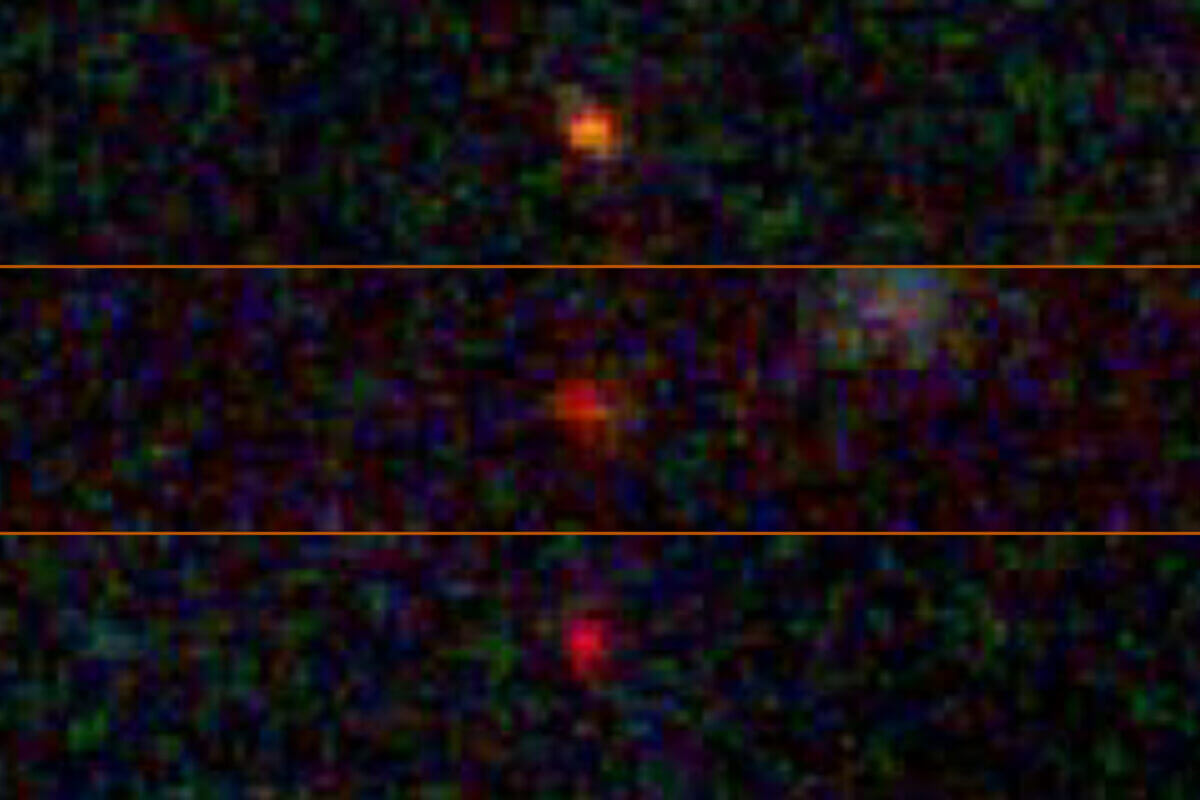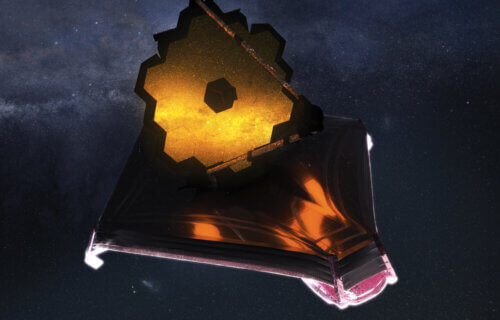AUSTIN, Texas — Astrophysicists may have discovered a new type of star, offering a tantalizing glimpse into the elusive realm of dark matter. Scientists from the University of Texas at Austin and Colgate University analyzed data from the James Webb Space Telescope (JWST) to identify three celestial objects that might be “dark stars” — astronomical phenomena theorized to be far larger and brighter than our Sun, yet powered by particles of the mysterious substance known as dark matter.
“Discovering a new type of star is pretty interesting all by itself, but discovering it’s dark matter that’s powering this—that would be huge,” says Katherine Freese, director of the Weinberg Institute for Theoretical Physics at UT Austin, in a university release.
The enigmatic substance known as dark matter makes up approximately 25 percent of the universe, yet its true nature has been a longstanding puzzle for scientists. The discovery of dark stars, if confirmed, could be a game-changer in our understanding of this mysterious cosmic ingredient.
The hunt for dark matter particles
Researchers have long speculated that dark matter consists of a unique type of elementary particle. Among the main candidates for these particles are Weakly Interacting Massive Particles (WIMPs). According to theories, when WIMPs collide, they annihilate themselves, releasing heat into surrounding hydrogen clouds. This heat would then convert these clouds into brilliantly luminous dark stars.
The team’s research suggests that observing these dark stars could offer critical insights into the nature of dark matter itself.
Observational hints and implications for cosmology
Follow-up observations of the identified objects’ spectroscopic properties could confirm their identity as dark stars. Such a confirmation would also help reconcile discrepancies between the existence of too many large galaxies early in the universe and the predictions of the standard model of cosmology.

“It’s more likely that something within the standard model needs tuning, because proposing something entirely new, as we did, is always less probable,” Freese explains. “But if some of these objects that look like early galaxies are actually dark stars, the simulations of galaxy formation agree better with observations.”
The three candidate dark stars were first identified as galaxies in December 2022 by the JWST Advanced Deep Extragalactic Survey (JADES).
“When we look at the James Webb data, there are two competing possibilities for these objects,” Freese added. “One is that they are galaxies containing millions of ordinary, population-III stars. The other is that they are dark stars. And believe it or not, one dark star has enough light to compete with an entire galaxy of stars.”
Cosmin Ilie, assistant professor of physics and astronomy at Colgate University, emphasized that the idea of dark stars is not entirely new.
“We predicted back in 2012 that supermassive dark stars could be observed with JWST,” Ilie says. “As shown in our recently published article, we already found three supermassive dark star candidates, and I am confident we will soon identify many more.”
A theoretical journey begins
The notion of dark stars sprang from conversations between Freese and Doug Spolyar, a graduate student at the time. Over several years, they developed a model suggesting that dark matter particles at the centers of early protogalaxies could lead to the formation of these mysterious stars, potentially making them several million times the mass of our Sun and up to 10 billion times as bright.
This research was funded by the U.S. Department of Energy’s Office of High Energy Physics program and the Swedish Research Council at the Oskar Klein Centre for Cosmoparticle Physics at Stockholm University.
The study is published in the Proceedings of the National Academy of Sciences.

